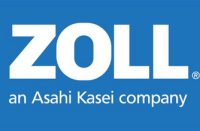Results Suggest Highly Effective Method to Treat Ventricular Tachycardia, a Leading Cause of Sudden Cardiac Death
WALTHAM, Mass.–(BUSINESS WIRE)–Thermedical®, a developer of thermal-ablation systems to treat ventricular tachycardia (VT), announced that results from a First-in-Human Early Feasibility Study (EFS) using the new Durablate® catheter to treat VT were presented in the late-breaking clinical trial sessions at the Heart Rhythm Society (HRS) meeting today.
Called the Saline Enhanced Radiofrequency (SERF) VT Ablation EFS, preliminary results were presented by the study’s Lead Investigator, Douglas L. Packer, M.D., professor of medicine at the Mayo Clinic, on Heart Rhythm 365, the society’s digital education platform.
“Our data from the First-in-Human EFS suggest a highly feasible approach to treating patients with recurrent VT that is resistant to other treatments,” said Dr. Packer.
The SERF VT EFS is a groundbreaking, single-arm observational study designed to evaluate the safety and effectiveness of the Durablate catheter to treat VT, a leading cause of sudden cardiac death worldwide. The target study population consists of patients who have failed all current forms of treatment including Implantable Cardioverter Defibrillators (ICDs), medical therapy and other forms of ablation therapy. The Durablate catheter uses a needle electrode to deliver heated, degassed saline and radiofrequency energy into the tissue to more effectively treat the tissue causing the VT than a standard, conventional ablation catheter.
Early feasibility results of 32 patients treated at six centers in the U.S. and Canada indicate that the SERF Durablate catheter is highly effective at eliminating clinical VT in patients with an acute procedural success rate of 100 percent and shows acceptable initial safety.
Five-month follow-up data demonstrate that more than half of the patients had no recurrent VT and more than 60 percent of the patients had their VT reduced by 90 percent or more. In contrast, for the six months prior to ablation, patients had a median of 40 ICD treatments (shock or antitachycardia pacing), which can significantly reduce quality of life. The Durablate catheter was used to deliver an average of 10 lesions per case and the average total procedure time was four hours and 42 minutes, which is significantly shorter than typical conventional RF procedures for patients of this nature.
“We are extremely encouraged by these early results as it puts us one step closer to advancing treatment that can reduce or eliminate VT episodes in patients,” said Michael Curley, Ph.D., FHRS, co-founder and chief executive officer of Thermedical. “Moreover, a successful and effective method to treat VT that is drastically shorter and more effective than current ablation procedures would improve quality of life considerably for people who develop, or who are at high risk of developing VT every year.
“We believe our SERF ablation therapy may serve as an adjunct to, or as a possible alternative to ICDs, and equally as important, it may be a low-cost alternative for treating VT, saving the U.S. healthcare system substantially in costs associated with current VT treatment,” added Dr. Curley.
The SERF VT EFS is underway in the U.S. at Mayo Clinic, Loyola University Medical Center, and Vanderbilt University Medical Center, and in Canada at Southlake Regional Health Centre, Montreal Heart Institute and Quebec Heart and Lung Institute.
About Thermedical
Thermedical is a privately held company founded by Massachusetts Institute of Technology (MIT) Hyperthermia Center alumni, Michael G. Curley, Ph.D. and Patrick S. Hamilton, Ph.D., based in Waltham, Mass. Under a Massachusetts Life Sciences Center Small Business Matching Grant (SBMG) Award, multiple NIH* Small Business Innovation Research (SBIR) Grants, and Series A venture funding, the company has developed thermal-ablation systems to treat VT and solid tumors. The Early Feasibility Study is the first human use of the Durablate Catheter Ablation System in the U.S. and Canada. For more information, visit www.thermedical.com.
About the Heart Rhythm Society
The Heart Rhythm Society is the international leader in science, education, and advocacy for cardiac arrhythmia professionals and patients and is the primary information resource on heart rhythm disorders. Its mission is to improve the care of patients by promoting research, education, and optimal health care policies and standards. Incorporated in 1979 and based in Washington, D.C., it has a membership of more than 7,000 heart rhythm professionals in more than 70 countries around the world. For more information, visit www.HRSonline.org.
* Research reported in this publication was supported by the National Heart, Lung, And Blood Institute of the National Institutes of Health under Award Number R44HL132746 and R44HL63535. The content is solely the responsibility of the authors and does not necessarily represent the official views of the National Institutes of Health.
Contacts
Amy Cook
amy@amcpublicrelations.net






